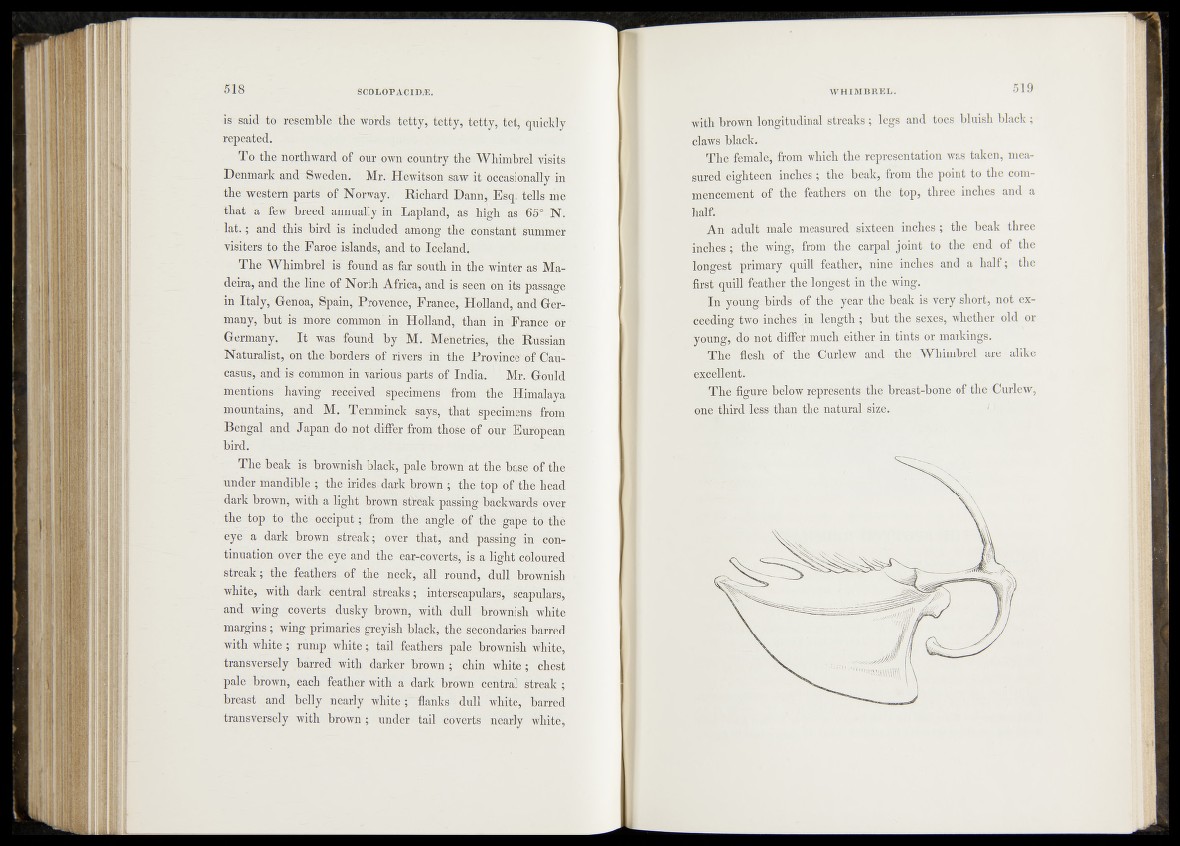
is said to resemble the words tetty, tetty, tetty, tet, quickly
repeated.
To the northward of our own country the Whimbrel visits
Denmark and 'Sweden. Mr. Hewitson saw it occasionally in
the western parts of Norway. Richard Dann, Esq. tells me
that a few breed annually in Lapland, as high as 65°. N.
la t.; and this bird is included among the constant summer
visiters to the Faroe islands, and to Iceland.
The WhimbrelTs found as far south in the winter as Madeira,
and the dine of North Africa, and is seen on its passage
in Italy, Genoa, Spain, Provence, France, Holland, and Germany,
but is mare common' in Holland, than in
Germany. I t was found by M. Menetries-,- the Russian
Naturalist, on tlm borders of rivers'in the "Province^dlf Caucasus,
an'dis common in various parts of India. Mr/Gould
mentions having received "specimens • from the Himalaya
mountains, and M. Temminck says, that sp'ecimeim from
Bengal and Japan do not differ from-th&e: of our European
bird.
The beak is brownish black, pale brown at the S^seTof the
under mandible ; the irides-djtrk brown ; the top of the head
dark brown, with a light brovn stVeak puling backA\ ards fcd-y*(?r
the top to the occiput; from the angle. of %%e ‘gape to the
eye a dark,brown streak; oVer that, and passing m- continuation
over the, eye and the ear-coverts,' is a ll^ht'capured
streak; the feathers of the neck, all round, dull brownish
white, with dark central streaks; interscapulars, scapulars!,
and wing coverts. dusky brown, with dull brownish - white
margins; wing primaries greyish black, the secondaries barred
with white; rump white; tail feathers pale brownish white,
transversely barred with darker brown; chin white; chest
pale brown, each feather with a dark brown central streak ;
breast and !;belly nearly white f" flanks dull white; barred
transversely with brown; under tail coterts nearly white,
with brown longitudinal streaks; legs and toes bluish black;
claws black.
The femhle, from which the representation was taken, measured
eighteen inches ; the beak, from the point to the commencement
of the feathers’on the top, three inches and a
half.
An adult male measured sixteen inches ; the beak three
the wing, from the eatpal joint to the end of the
longest -primary quill feather, nine' inches and a half; the
first quill feather the-lohgest in the wing.
In youngibirds of, the year the beak is very short, not exceeding
|;-W|incMMin length-; but the sexes, whether old or
young, dlfcnot differ niiic^^ith'er in. tipts or markings.
The flesh bf^t^^Gurljew' and the Whimbrel are alike
excellent»
T^l^igure below fepresehis,;the breast-bone of the Curlew,
one-third H i than ih^nl,tural^p®t^*